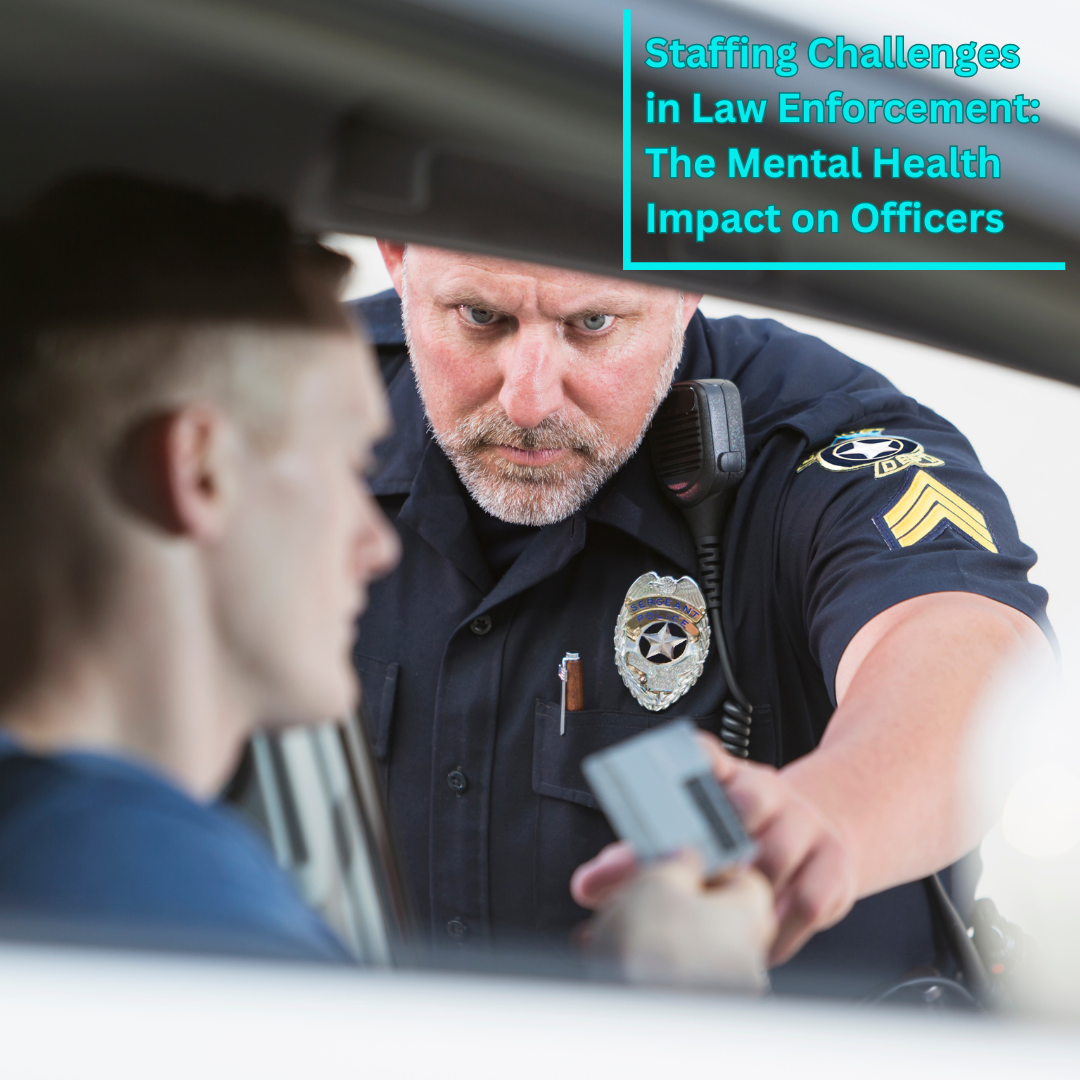Staffing Challenges in Law Enforcement: The Mental Health Impact on Police Officers
Staffing Challenges in Law Enforcement: The Mental Health Impact on Police Officers
Police officers stand on the front lines every day, working to protect and serve their communities. However, the nature of their work often exposes them to intense stress, demanding schedules, and potentially dangerous situations. From managing high-pressure incidents to working long hours in an environment that can be physically and emotionally taxing, the mental health impact on law enforcement officers is profound. These challenges not only affect the well-being of officers but also contribute to ongoing staffing shortages, creating a cycle that is difficult to break.
The Mental Health Toll of a Demanding Job
Police work is not your typical 9-to-5. Officers frequently work irregular hours, including night shifts, weekends, and holidays, which disrupts normal sleep patterns and family life. The emotional toll of responding to traumatic incidents, witnessing violence, and managing crises often leaves officers with high levels of stress and anxiety. In addition to these demands, there’s also the risk of physical harm, adding another layer of mental strain. Over time, this can lead to burnout, depression, and even PTSD.
These mental health challenges don’t just impact individual officers—they also have ripple effects on the entire force. With high rates of burnout and mental fatigue, officers are more likely to leave the profession, contributing to the recruitment and retention challenges many law enforcement agencies face today. A shrinking workforce means those who remain are often asked to do more, taking on additional shifts and responsibilities, which only amplifies the strain.
The Recruitment and Retention Crisis
For potential recruits, the perceived risks and pressures of law enforcement are hard to ignore. In recent years, interest in police work has declined, with fewer candidates applying to join the force. Many young people today are deterred by the high burnout rates, mental health challenges, and personal sacrifices that come with the job. This has led to a recruitment crisis, with agencies struggling to bring in new officers and cover staffing gaps.
Meanwhile, current officers face an ever-growing workload. Those left on the force are stretched thin, covering additional shifts and facing increasing pressure to perform under challenging conditions. This further diminishes morale and leads to higher turnover, as officers feel the mental and emotional cost of the job outweighs its rewards.
How SmartProtect Can Support Police Wellness
SmartProtect offers a promising solution to help law enforcement agencies manage these challenges and prioritize the well-being of their officers. Through predictive analytics and data-driven insights, SmartProtect can help agencies identify patterns of stress and fatigue among their workforce, allowing administrators to adjust schedules and proactively support officers’ mental health.
By analyzing shift patterns, incident types, and stress indicators, SmartProtect can alert agencies to times when officers are most at risk of burnout. This information allows leaders to optimize staffing, ensuring that officers are not overloaded during high-stress periods. Additionally, predictive technology can help agencies anticipate high-demand times and allocate resources accordingly, preventing the need to overburden any single officer.
SmartProtect also offers insights that support a proactive approach to officer wellness. For instance, by aligning staffing needs with anticipated demand, agencies can reduce the likelihood of back-to-back high-stress shifts, giving officers a chance to recover mentally and physically. This strategic approach not only improves officer morale but also contributes to a healthier, more sustainable work environment.
Promoting a Culture of Wellness and Retention
By implementing tools like SmartProtect, law enforcement agencies can prioritize the mental health of their officers, supporting a culture of wellness that fosters job satisfaction and resilience. When officers feel valued and supported, they are more likely to stay in their roles, reducing turnover and easing the recruitment challenge. This, in turn, helps agencies maintain a stable, experienced workforce that can better serve the community.
Through smarter scheduling, proactive wellness initiatives, and a commitment to officer mental health, law enforcement agencies can address the staffing crisis and support their teams in meaningful ways. SmartProtect empowers agencies to make data-driven decisions that enhance both public safety and officer well-being, offering a path forward that benefits everyone.
In an environment where officer wellness and public safety go hand-in-hand, solutions like SmartProtect are essential for building a resilient and thriving workforce. Let’s prioritize the mental health of those who serve and protect, ensuring they have the support they need to continue making a positive impact in our communities.


